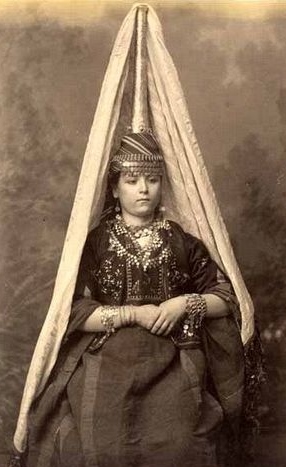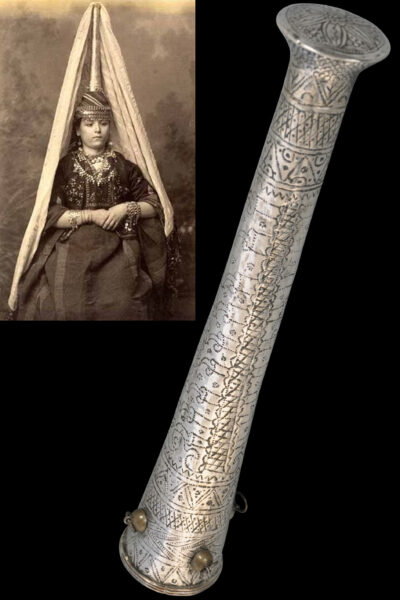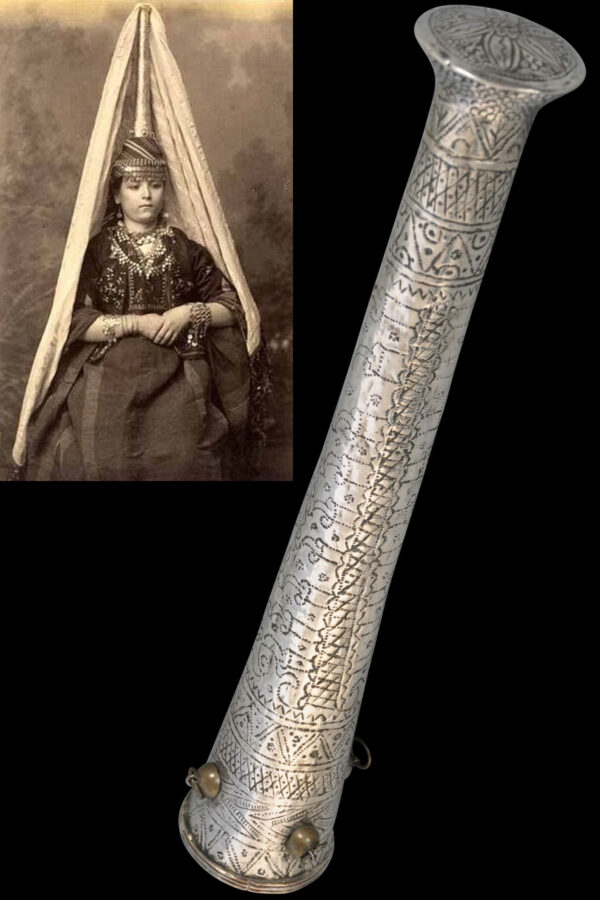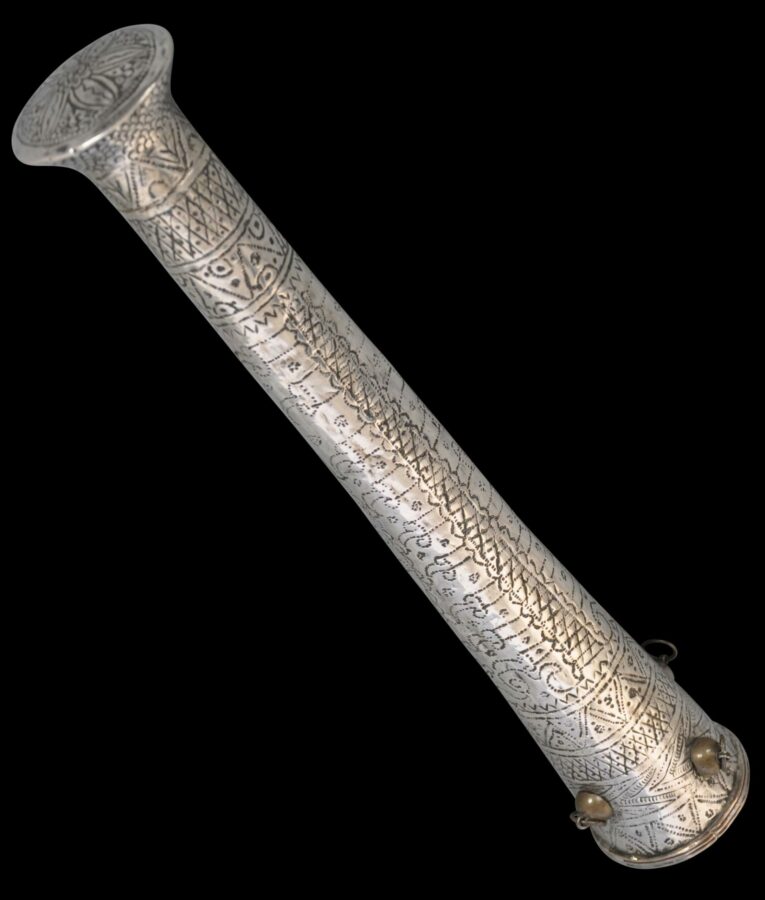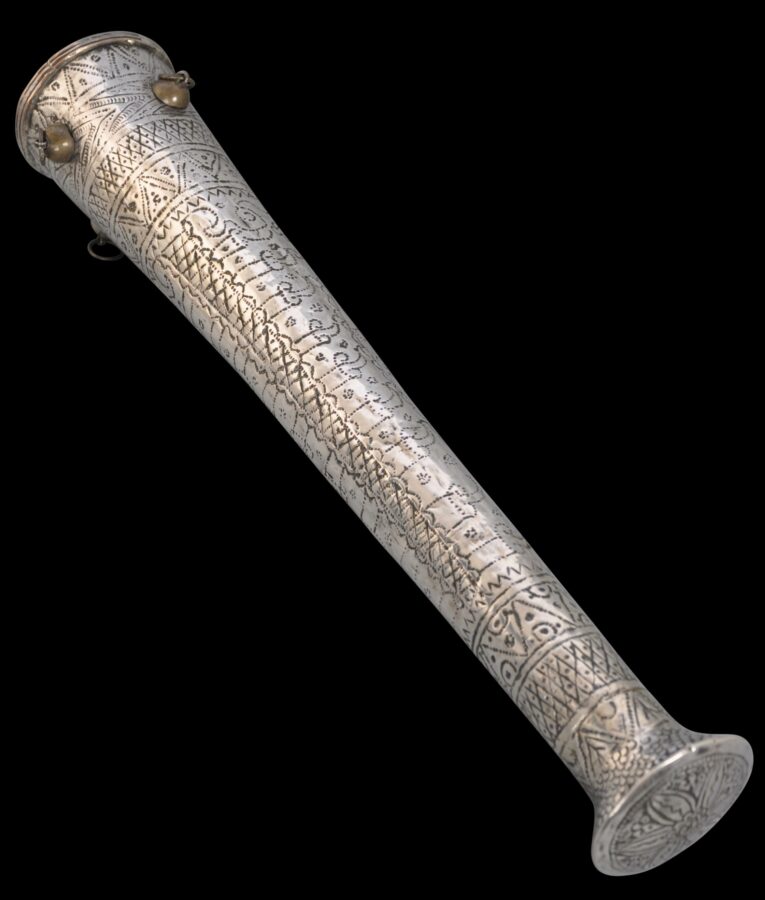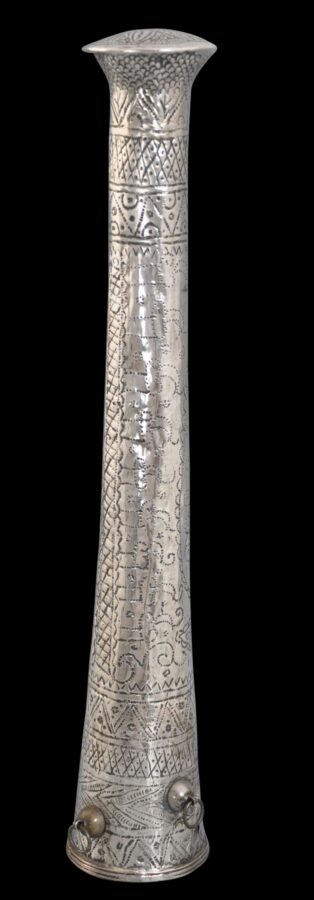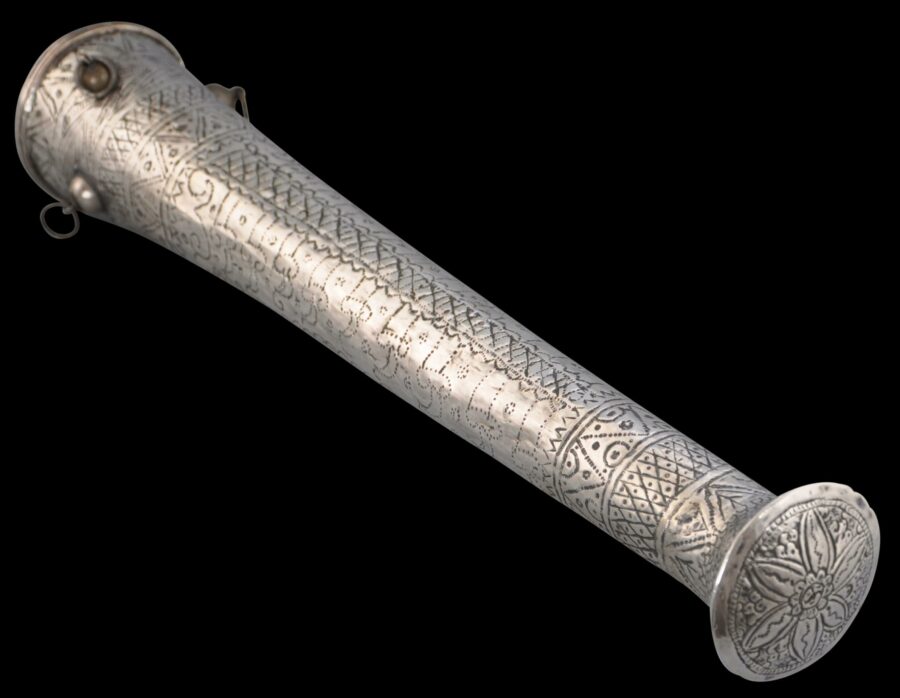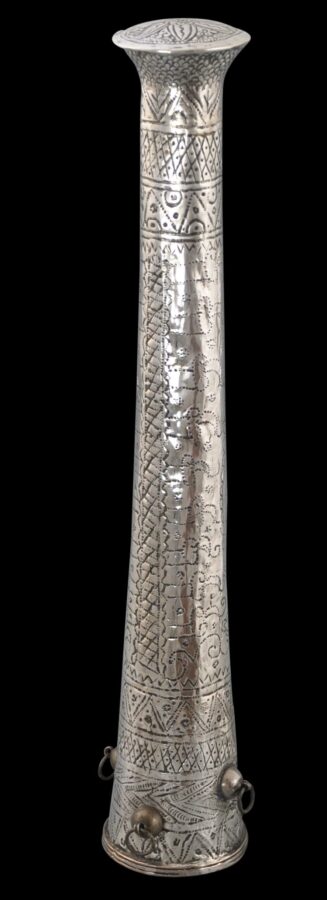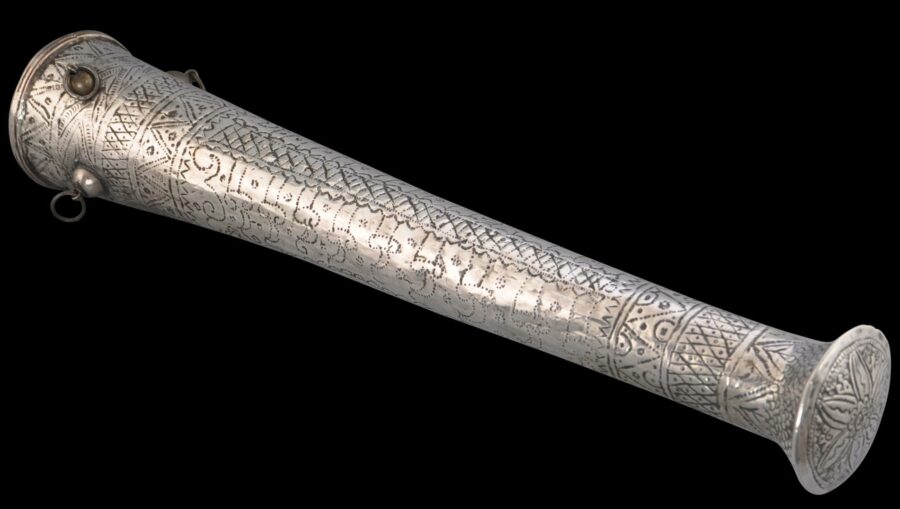This unusual and rare unicorn-like item known as a tantur, was worn as a headdress mostly by Druze and some Maronite women in the mountain regions of Lebanon. It is tall, conical, and made of engraved, high-grade silver. It tapers to a top that is slightly curved and engraved with a flower motif.
The sides are engraved with geometric and cloud-like motifs, among others, and bands of geometric and wavy patterns. The lower rim has three gilded studs with rings to allow the headdress to be secured to the head.
To make each tantur, it is likely that the silversmiths engraved and chased a flat piece of sheet silver first and it was then rolled into the headdress form, with the join then being pinned and soldered.
Married women wore the tantur fixed to the top of their heads and often with a silk or muslin scarf or veil over the structure which fell to the shoulders. Higher ranked women wore a gold tantur, lower ranked women wore a silver tantur, and those of the lowest ranks wore tanturs made from wood or copper.
Visitors to the mountainous regions of Lebanon reported towards the end of the 18th century that tanturs would be presented by their husbands on their wedding days and that the women who wore tanturs almost never took them off other than to sleep.
The fashion to wear a tantur appears to have largely died out by the 1860s.
Several examples are known in museums around the world including the British Museum, Museum of Applied Arts & Sciences in Sydney, and the Pitt Rivers Museum at the University of Oxford.
The example here is in a fine, stable condition. There are minor holes (the silver is thin) but it has a superb patina and obvious, considerable age.
This is an extraordinary and rare relic.
